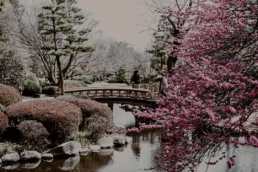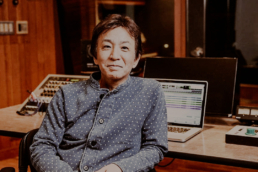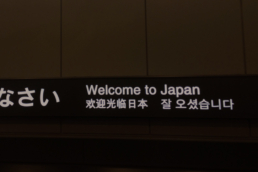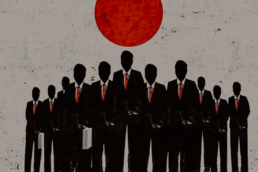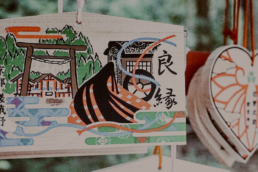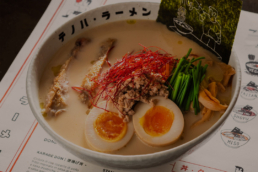The wonderful gardens of Japan
With Japan Italy Bridge we have already addressed a deep focus on the Imperial Palace and its gardens, but those are not the only gardens of Japan. Today we will talk about the most beautiful green spaces of the Rising Sun.
Gardens of Japan, the green in the midst of modernity
Author: Sara

photo credits: giardiniepiscine.it
Every country in the world, no matter how evolved, technological and chaotic it is, always hides an oasis of extraordinary peace, a place where the hand of man has not destroyed, but rather takes care of natural beauties of indescribable charm. We are not talking about natural parks this time, but about smaller green spaces such as gardens. Green spaces that arise in unexpected places and that give the mind and soul a break from all that is skyscraper landscapes and cars that, again, Japan knows how to give us with its usual elegance and unique spiritual touch.
The trip we are proposing today will make you relax, so how about making yourself comfortable, preparing a delicious herbal tea and follow us?
Kenrokuen
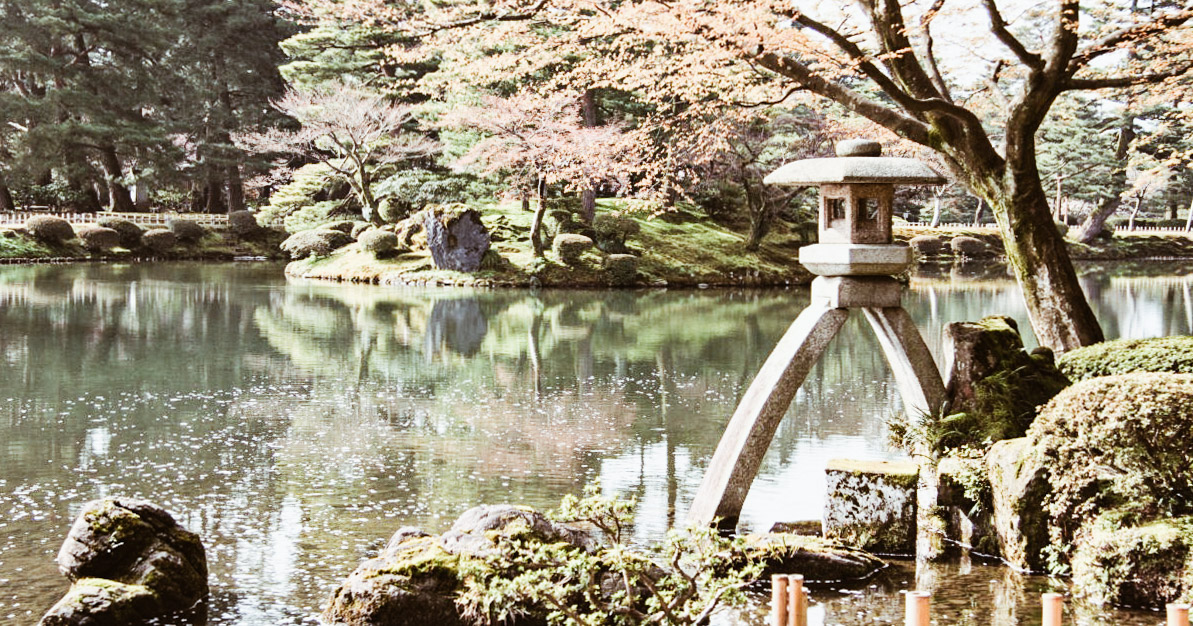
photo credits: japantravel.com
The first of our stops is Kanazawa where there is the Kenrokuen which covers an area of 11.4 hectares and is considered one of the most beautiful gardens of the Rising Sun. Kept luxuriant from generation to generation by the Maeda family since the feudal period, in Japanese the name Kenrokuen means "garden of 6 attributes" because in it are enclosed the 6 characteristics of the perfect garden: space, tranquility, artifice, antiquity, waterways and landscapes.
Official Web Site: pref.ishikawa.jp
Korakuen
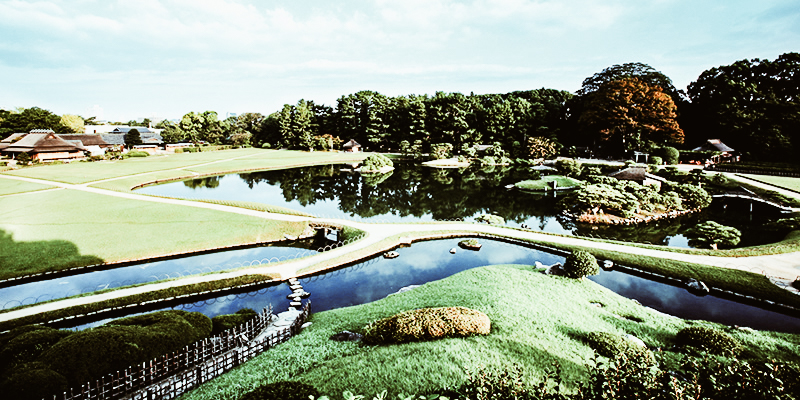
photo credits: okayama-kanko.net
The second stop takes us to Okayama, where the magnificent Korakuen stands: built in 1687 exclusively as a place of entertainment for the ruling family, it was opened to the public in 1884, when it became property of Okayama prefecture. It encloses forests, tea and rice fields, a spectacular pond and many small streams.
Official Web Site: okayama-korakuen.jp
Kairakuen
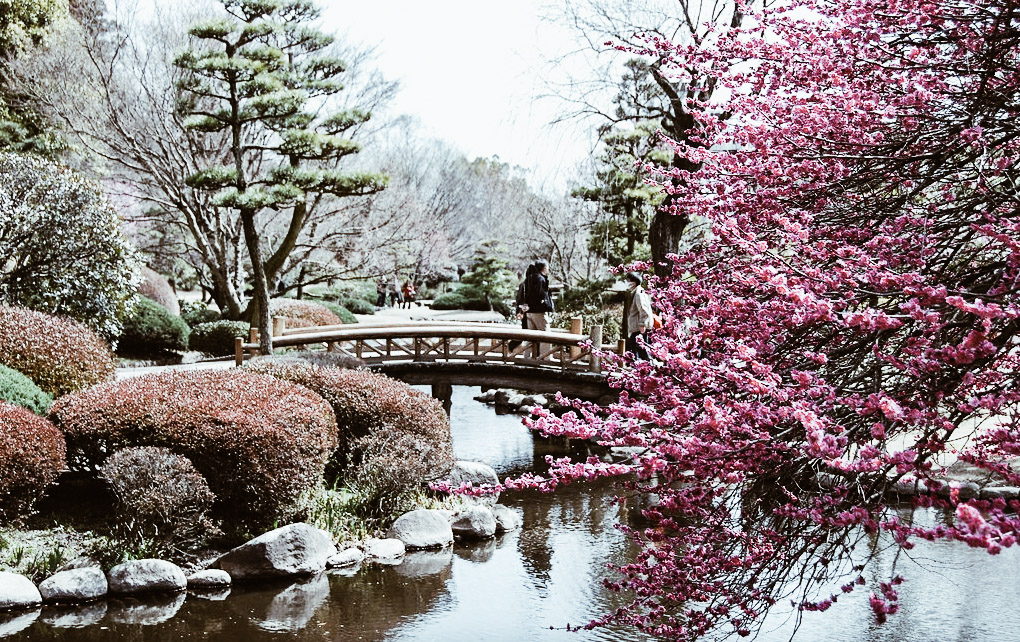
photo credits: flickr.com
We have come to the third of the most beautiful landscape gardens in Japan, we are in Mito, the capital of Ibaraki Prefecture and here Kairakuen has always been a place accessible to all, not only for the local lord Tokugawa Nariaki who had it built in 1841. This beautiful green space has become famous thanks to the Mito Ume Matsuri, the festival of plum blossoms, held between February and March: a spectacle of timeless charm.
Official Web Site: ibaraki-kairakuen.jp
Kokedera

photo credits: saihoji-kokedera.com
Our fourth visit will be to Kyoto, to the garden that is home to 120 different types of moss! It is the Kokedera or Saihoji Temple, originally part of a royal villa it became a temple almost 1000 years ago and today is considered a UNESCO World Heritage Site. Visiting this place also offers a unique opportunity, as before being allowed access, visitors must participate in kito (chanting) and shakyo (the copying of Buddhist scriptures).
Official Web Site: saihoji-kokedera.com
Shinjuku Gyoen
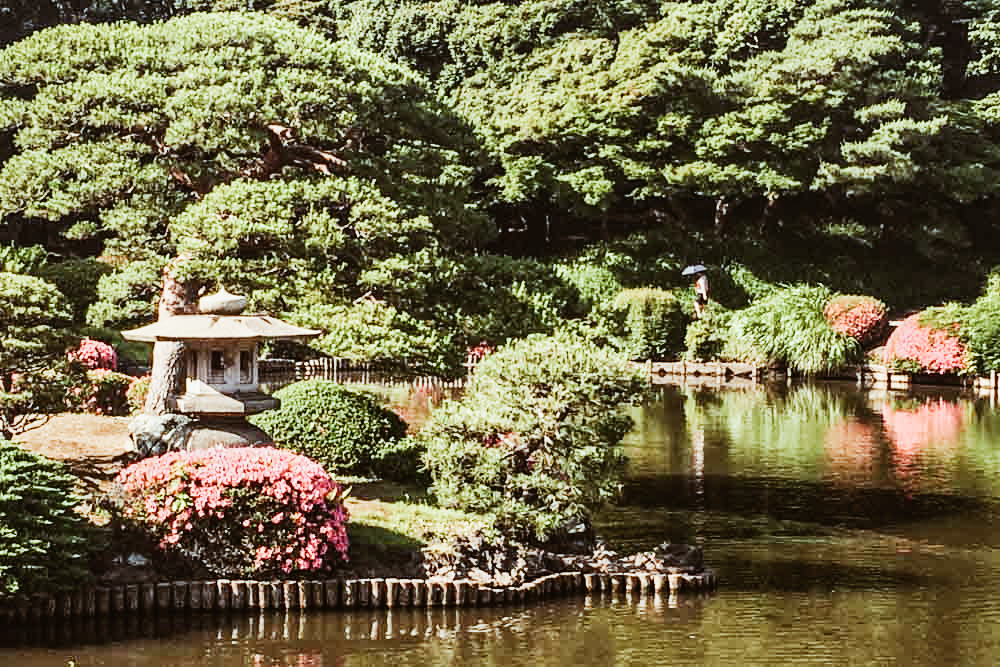
photo credits: www.japanistry.com
For our fifth stop, we fly straight into beautiful Tokyo where we can come across the Shinjuku Gyoen National Garden, one of the most striking national parks in the country. Built in the Edo period as a private residence of the feudal lord Kiyonari Naito, it became open to the public in 1949. Inside you can immerse yourself in various gardens, first of all the oldest one in Japan full of lakes, islets, bridges and pavilions. Then you can get lost in the magnificent rose garden of the French-style garden and, last but not least, enter the English-style garden with its wide green lawns lined with beautiful cherry trees: here Hanami acquires an indescribable magic!
Official Web Site: env.go.jp
Imperial Palace East Gardens
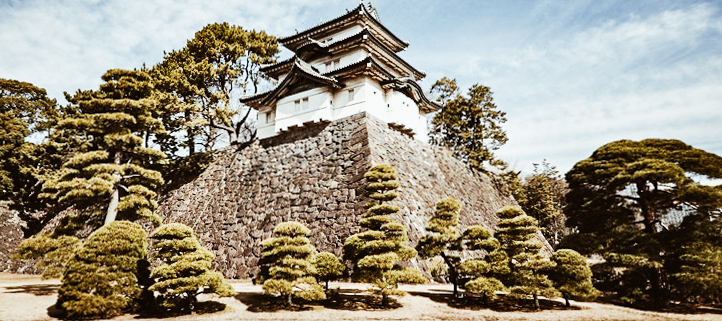
photo credits: enjoy.vivi.city
We conclude our nature trail by staying in Tokyo. Over 210,000 square meters where, once upon a time, stood the walls of Edo Castle, residence of the Tokugawa shogun who ruled Japan from 1603 to 1867. At the foot of the hill, exactly where the defensive walls once stood, lies this marvellous garden in which the Ninomaru pond is home to some rather rare aquatic plants and is covered with Nuphar Japonicum, yellow water lilies.
Official Web Site: https://www.kunaicho.go.jp
The power of social media: TikTok and the Japanese pop star
We continue with our Business Focus column and today we are discussing the TikTok and Miki Matsubara case. Do you already know what we are talking about?
We've said many times before how social media is a powerhouse for businesses and individuals alike, and in this year's pandemic we've had confirmation of that. Even those who did not believe in the digital revolution have now had to change their minds.
How TikTok resurrected a Japanese pop star hit song
Author: Erika
In these months of quarantine and forced isolation, we have seen an increase in creativity on social media. A clear example of this is the rapid rise of TikTok, the favourite social media of young people, which has seen the number of users constantly growing to become the second most downloaded app in 2020.
From pranks to animals to the now famous dance videos, many TikTokers have launched trends that still accompany our days. But today the power of TikTok doesn't just stop with its trends. The case of Miki Matsubara and how a video shared on this social managed to revive one of his hits from 1979 has caused a stir.
In December, users of the platform resurrected the song 'Mayonaka no Door: Stay With Me', which made Matsubara a star in Japan back in 1979. More than 40 years later, the song is still catchy and joyful enough to become the perfect soundtrack to TikTok videos featuring Japanese mothers;
"I did the TikTok when my mum was doing things around the house," one user tells The Japan Times via email. This clip reached more than 1.5 million likes and views in a very short time, propelling "Mayonaka no Door" to the top of Spotify's Global Viral 50 chart for three weeks.
@kickronnie
I’m asking her to sing this next karaoke night 👸🏻 #japan #japanese #おかあさま #fyp
♬ 真夜中のドア/Stay With Me - Miki Matsubara
Unfortunately, Matsubara died in 2004 and was unable to enjoy the revival. However, the song's composer, 71-year-old Tetsuji Hayashi, tells the Japan Times that this new hit "seems very strange... it was so long ago".
Music and social media
.
But is it really that strange? Let's start with the fact that when a song is good, it's still good even after forty years, but let's also think about how much power social media has gained these days. Unfortunately, much of the Japanese music industry still seems to operate as if it were 1979, thus giving little importance to the digital and social media world. The Matsubara case is a case in point.
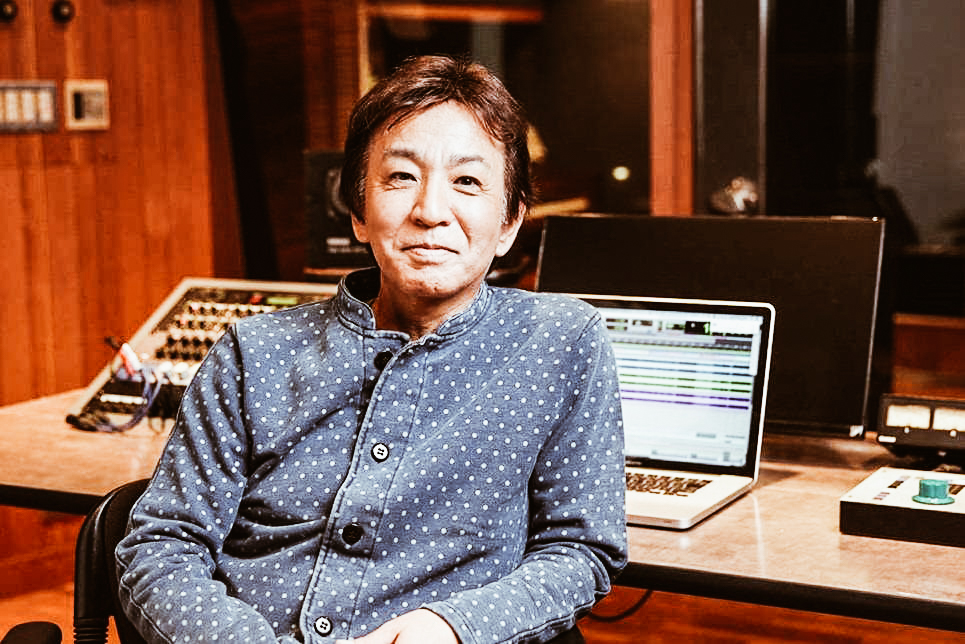
Singer-songwriter Tetsuji Hayashi says new technologies are rewriting the rules of how a song becomes a hit, "it could be from another country or another generation". It's been a few months now, but the 'Mayonaka no Door' case shows how the interaction between Japanese artists and international listeners has changed over the last few decades. International social media also allows a new generation to fall in love with an artist who might previously have been discarded from playlists simply because of her or his nationality. With the rise of K-pop and the unstoppable BTS, social media sites such as TikTok are also increasingly trending Japanese songs.
The power of TikTok
.
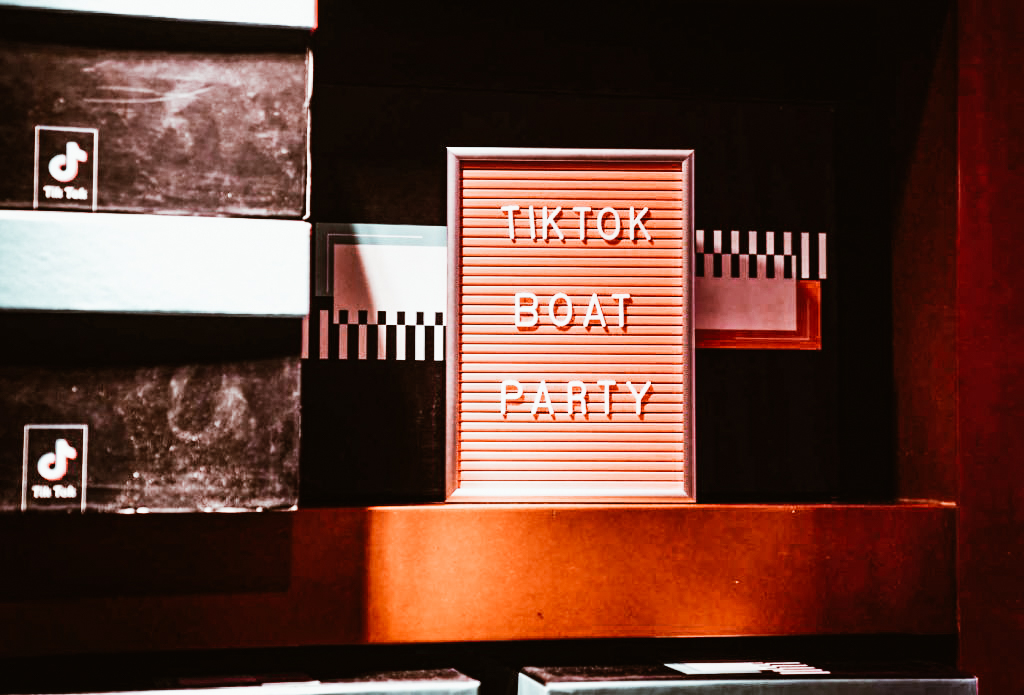
Based on recent statistics, TikTok users spend more than 850 minutes per month on the app, more than 14 hours per month. If we look at the data from October 2019 to March 2020, we can see a significant increase in the amount of time the average user spends on the app, also due to the lockdown.
This social media has spread like wildfire globally, particularly in Asian nations, becoming an entertainment outlet thanks in part to its search based on hashtags. In fact, as of June 2020, the most popular categories on TikTok all have over a billion views. If we go on to count lip-synching and dance videos, we arrive at a total of over 150 billion views.
2020 was marked by lockdowns, and it was during this time that people jumped on new media in search of entertainment and an outlet for their creativity. In fact, TikTok took second place on the list of most downloaded iPhone apps, surpassed only by Zoom for obvious reasons. TikTok even surpassed the downloads of Facebook, Messenger, Gmail, Netflix, YouTube and Instagram, across all app stores, making it the most popular app globally in 2020.
Moreover, in a world like the digital marketing one, we know how important the engagement rate of a social media is. Recent data show that engagement rate varies at different follower levels for Instagram, YouTube and other social media. However, at all follower levels, TikTok has a considerably higher rate than other platforms. In fact, Upfluence analysed that micro-influencers have an engagement rate of 17.96% on TikTok, compared to 3.86% on Instagram and 1.63% on YouTube. While mega-influencers have an engagement rate of 4.96% on TikTok, 1.21% on Instagram and 0.37% on YouTube.
The figures speak for themselves and in 2021 we can only expect a steady rise of this social network and who knows, maybe we can rediscover some other Japanese hits! Do you already have any idea on what the next music trend for TikTokers might be in 2021?
Business Focus: Native Advertising, what it is and its importance, also in Japan
We continue with our Business Focus column and today we are talking about Native Advertising. Have you ever heard of it?
Native Advertising: what it is and its importance, also in Japan
Author: Erika
At a time like this when the whole economy is almost at a standstill, the smartest move is to invest in advertising and marketing. But we know, there is a sea of information and possibilities in this field. However, recently many companies are asking "What is Native Advertising?", let's find out together.
Before we go on to talk about native advertising, we need to take a brief look at the world of online advertising.
The difficulties of online advertising
By now, we are all bombarded with so much information that the advertising market is often saturated. So how do you find and reach your niche audience?
The attention span of online users has been steadily declining for some time now. The average user has an attention span of around 8 seconds. Just think that a goldfish has an attention span of around 9 seconds, which shows how difficult and important it is to hit the user in the first few seconds of viewing.
If we then move on to analyse visibility and the famous CTR, we see that the majority of advertising banners are no longer even displayed, or even clicked on accidentally. In addition, users are also fed up with the exorbitant number of advertisements, very often unwanted. It is precisely here that the various AdBlocks make reaching our target audience even more difficult.
Basically, nobody looks at the banner ads on the various sites anymore. This is where content marketing comes in.

Content Marketing
By now, more or less everyone has heard of content marketing because most online advertising today is done through this form. Many companies, especially those with an international audience, have realised that content and influencers are an excellent (if not the best) marketing tool.
Indeed, branded content is now all the rage on social media and has become a much more effective form of advertising than traditional promotional campaigns.
In a nutshell, this content has a 7 times higher user trust rate than traditional display advertising. They are permanent and can capture visibility and traffic even in the long term. In addition, if we add in a properly done SEO operation, this content has a higher medium to long term ROI.
If we then consider that over 51% of the time spent by users on digital media is spent on a mobile platform, we understand how fundamental it is to have a format that works on these devices.
Mobile and advertising
In a very short time, we have gone from a horizontal 16:9 view to a vertical 16:9 view. Thanks to Stories, Reel and especially smartphones, this format is now one of the most popular formats for all digital advertising campaigns. In fact, our phone screens are already smaller than a computer screen, so why waste precious visual space with display ads, overlays and totally intrusive pop-ups?
It is precisely on these devices that advertising should be designed to optimise screen space and, consequently, the flow of navigation (continuous scrolling, of course). So how do we do it? With Native Advertising of course!

What is Native Advertising
And here we come to the highlight of our article. In essence, Native Advertising is advertising that adapts to the context in which it is placed. For example, they inherit the function of the platform they live on (e.g. Facebook likes). Furthermore, they do not interrupt the user's navigation and are relevant to the viewer. These are characteristics that lead to a greater engagement with this type of advertising.
Basically, nothing new you might say. For years we have already been developing native campaigns such as sponsored posts on various social media, sponsored articles, widgets and so on. However, there are several recognised forms of Native Advertising:
- In-Feed: paid ads placed in an editorial site
- Paid Search: paid ads placed on the results page of a search engine.
- Recommendation widgets: paid advertisements promoting content related to an article.
- Promoted listings: paid advertisements inserted in the product listing of an e-commerce.
- In-Ad: content inserted inside a standard advertising format.
- Custom: special tailor-made initiatives conducted by a brand in collaboration with a publisher, i.e. sponsored articles.
As this is a less overt form of advertising than others, it is important to emphasise when a piece of content has been sponsored or not. Transparency must always be guaranteed.
Creating content that the public loves
We have often had to create content for a Native Advertising strategy, from brands selling Japanese lifestyle products to children's products. However, the main aim is not to sell, but to build the audience for the client.
To do this, it is important to follow several rules because the "sponsored post" cannot be too different from the rest of the content that the chosen platform usually offers. The length, the tone of voice, the language, the font, everything must be in line with the other content. However, it is essential to create a title that is clickable and captures the visitor's attention.
It is very important to be able to capture the user not with numbers and questions, but with a narrative that fascinates him. By now, even the least astute of internet users can tell when someone is trying to sell them a product. Because of this, it is important to differentiate our "sponsored post" by telling personal experiences and creating empathy for example.
The audience has to be involved but above all entertained. Making a person laugh is one of the hardest things to do, but when you succeed, you have captured their attention forever. And so the customer is retained.
Be empathetic but objective, try to help the audience in some way and share your experience. The product does not necessarily have to be mentioned repeatedly, once is enough, also because with the opposite you could risk falling into what in jargon is called "branding" and thus achieve the opposite effect desired by Native Advertising.


Native Advertising in Japan
And here we come to Japan. Despite being a country extremely focused on traditional media and advertising on them, things are changing recently. Due in part to the recent pandemic, the advertising market has seen a significant surge in digital. In fact, Japanese advertisers spent nearly $15 billion on digital in 2021. With the rise of digital media in Japan, companies can no longer ignore the importance of integrating a digital strategy into their overall marketing.
However, fundamentally the Japanese people remain a very traditional people, very tied to history and past experiences. The Japanese people are extremely trust-based, so digital advertising still depends on having a good online reputation. Therefore, SEO and social media operations become key to getting better results in the Japanese market.
One of the keys to a successful campaign in Japan is the use of correct localisation. We can't say it enough, but the Japanese are extremely meticulous when it comes to choosing the right product before making a purchase. Using their language and visuals becomes really important. Writing content that is correct and in line with your target audience is one of the foundations for building a good campaign. Attention to detail and high product quality is the key to winning over Japanese customers.
In conclusion
Native advertisements should resemble any other article on the chosen platform, both in style and function. Be resourceful, truthful and above all remember to entertain your audience.
Business Focus: Why startups should target Japanese customers
Have you ever wondered why startups in the global market don't target the Japanese market? Maybe for the same reason Japanese startups are afraid to enter the global market?
Why startups should target Japanese customers
Author: SaiKaiAngel
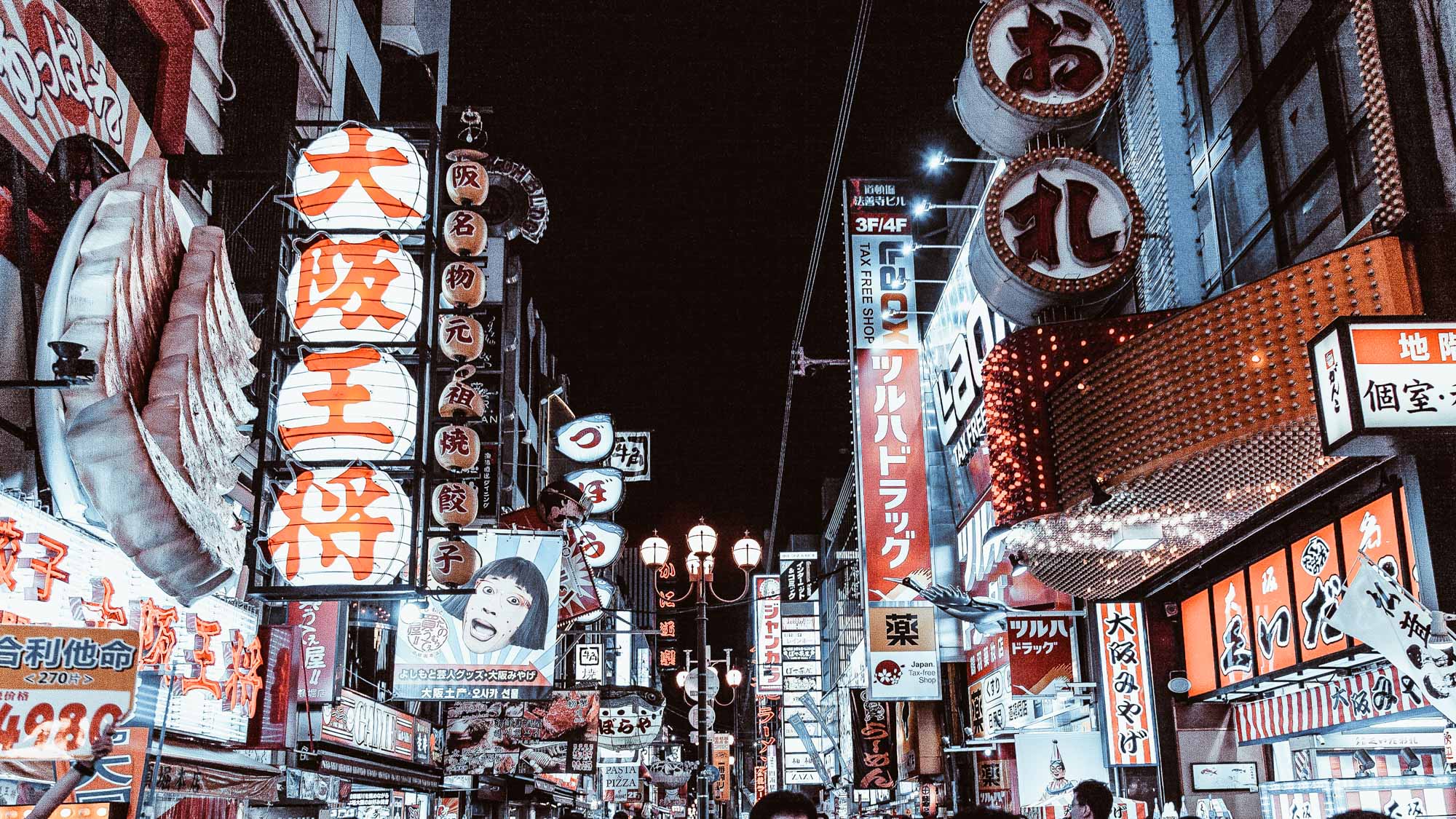
First of all, one thing that should definitely not be underestimated is the language barrier. The Japanese in general, are not very keen on learning other universal languages, such as English this could be a pretty big limitation. On the other hand, Japan is a very conservative society and jealous of its culture and tradition. On the other hand, in the rest of the world, the Japanese language is not among the first to be learned. This is one of the first reasons why young start-ups choose English-speaking countries and other Asian countries that are growing at a very fast pace.
Unique customs and business cultures
Every country has unique customs and cultures, but I think the situation in Japan is more intense and explicit than in any other foreign country. Adventure in Japan is definitely not to be underestimated!
Let's take some practical examples. If you want to promote your product or service in Japan, it might be difficult to do so without the support of an agency that can have a lot of influence on the market, especially if you provide technology media services for marketing. Even giants like Google and Facebook have hired local employees to support their agencies!
Some say that the Japanese love brands. In fact, I am of the opinion that the Japanese place great weight on a past reputation of trust before buying or subscribing to something. Considering these points, startups in foreign countries need a sophisticated strategy and marketing, and above all a trustworthy name.

photo credits: fiercebiotech.com
The standard strategy is to partner with a local company in Japan.
Of course, the local company should be familiar with the Japanese market and the language itself. By the way, Japanese people love the "made in Japan" brand, so they are willing to buy appliances in the shop that are not Samsung and LG, but Japanese brands such as Sony and Panasonic, even if they are obviously of lower quality and higher price.
This is not necessarily a bad thing in Japan, on the contrary! A company that wants to make a name for itself in Japan, should target the Japanese market from the start, so that it becomes better known.
Let's take a look at the reasons why startups should target the Japanese market while taking some risks.
Market size
We are talking about a huge size, because the size of the Japanese market is the third largest in the world, so a huge potential for startups.
China has the second largest market, but let's not forget that the Chinese Communist Party has run the entire nation and this has put a crackdown on foreign companies because they want to control every piece of information. While some American companies like Apple and Starbucks have been working in the Chinese market, Google and Facebook have practically not started working there yet. Considering this, it might be difficult or impossible to find your way into the Chinese market. So, taking out China, Japan becomes practically the second largest market after the US.
Excessive concentration in Tokyo
If you are a B2B company, you have to physically visit your potential customers because the Japanese prefer to conduct business in person. Tokyo, the capital of Japan, is a convenient and fascinating city for companies because almost all the offices are located in the Tokyo metropolitan area. If you can conquer Tokyo, you can practically enter the Japanese market with ease. Fortunately, there are many co-working spaces, such as WeWork, in Tokyo and many global startups have taken advantage of them.
High loyalty
As explained earlier, many Japanese people attach themselves to a brand. In other words, if you can work hard and gain the trust of new customers, the Japanese could be the most loyal customers for your brand.
According to Shopify's State of Commerce report, Japanese users tend to repeatedly purchase items if the merchant has a good relationship with them. These statistics show how loyal and critical Japanese customers are to a business.
I want to conclude by saying that it is very important to try to enter the Japanese market, because all companies would need to have their own principles of brand loyalty and attachment. If all companies were able to do this, they would certainly be able to have a more loyal and constant audience over time and thus stay on the wave more. It is important to understand and appreciate the customs and traditions of a place before targeting its brand, it is important to create trust with one's customers.
All this is what the Japanese believe in and what any global company should learn to do. Never lose sight of the Japanese market, because it is the one that will give you the satisfaction you need. Maybe some barriers exist, but the market is worth it with its size, focus and loyalty.
A startup has to be constant, loyal, and a good connoisseur of the habits and customs of the people it is addressing. It is not difficult to create a good branding in Japan, as soon as you have managed to overcome the language barrier, you just need to have this kind of strength and don't forget that we are talking about, practically, the second largest market in the world after the United States.
Japan, the preferred destination for people wanting to move abroad
Its timeless charm, the opportunities it offers, the hustle and bustle of its cities and the sheer size of its cities make Japan the preferred destination for all those who decide to move abroad to live and work.
Japan, the preferred destination for people wanting to move abroad
Author: Sara

photo credits: tokeet.com
According to a global survey, Tokyo stands out among the top 5 cities in the world chosen to embark on a new life experience. Working in Japan seems to have become the aspiration of many, according to a recent ranking by Remitly, a British company that offers a global digital money transfer service to help all immigrants around the world who make great sacrifices to live and work in another country, the number of those who choose the Rising Sun as a destination to change their lives is surprisingly high, even in this time of pandemic.
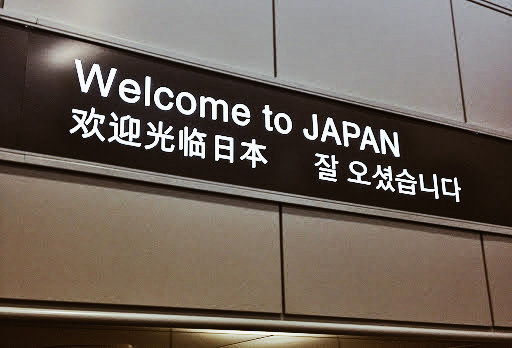
photo credits: travelwithvik.com
Online searches speak for themselves: Japan is the second most popular country in the world to which everyone wants to move after Canada! Most of the data comes from specific countries such as the USA, Australia, Thailand, Laos, Myanmar, Indonesia, Cambodia and the Philippines.
The desire to change one's life by looking to the Land of the Samurai as a destination is also increased by the high degree of safety, beauty and culture. The Japanese response to the pandemic, its rigorous conduct in establishing a state of emergency and avoiding panic and misinformation to the population, has only increased the desire to make the big move and 'try one's luck' in one of the magnificent regions of this immense island.


photo credits: transferwise.com, boutiquejapan.com
What do you think? Would you take the "big leap"? Is Japan the chosen destination for you too, or are there other countries you are aiming at? Let us know! And anyway, we wish you to realise all your dreams as soon as possible, 頑張ってください
Business Focus: the psychology of customer relations
The "Business Focus" column on Japan Italy Bridge continues and today we are talking about problem solving, communication and customer relations, also in Japan.
Problem solving: the psychology of customer relations, also in Japan
Understand who is in front of you. This is a lesson that I have been given personally and that I always try to carry on. What does it mean to really understand who you are dealing with? Surely it is the basis of every activity, both personal and professional, and if it were easy, everyone would succeed effortlessly in their work. It is not easy.
Only a few people manage to stand out from the masses and from the noise that, especially nowadays, is heard all too often. In the midst of the noise a voice, an attractive and loyal voice. The voice of someone who is willing to listen, but very carefully, to the needs of others. To build an audience you need this, along with a lot of intelligence to understand human behaviour.

photo credits: artplusmarketing.com
Attracting and keeping attention.
Let's talk for example, to make it more understandable, about the podcaster. The good podcaster not only has to attract his audience but also has to do his best to keep the listener's attention without shouting too much and without having voice drops that can lead to inattention.
Dreams must be created, needs must be met. Determination. Passion. Constancy. Consistency. One must never show anything that is contrary to the above factors.
Understand your own psychology
Before understanding others, you absolutely must understand yourself. In order to build an audience, one must first understand what we ourselves are inclined to do.
Are we able to communicate in the right way? Our job is to be among people, to attract customers, to care about our customers.
Are we not able to communicate well? Being in the "backstage" and in the "background", do you think it is bad or demoralising? No, it is not. Because most likely, the people on stage are only good at that and they should also learn how to build the show because the artist in question would not be able to do anything without a staff that creates the show from scratch.
In short, before you make yourself likeable by making an effort, the study to be done is very heavy and long and know that people notice your fake smile.
Don't risk what you are not! Whether or not you are able to understand others and therefore yourself, don’t go into what you are not suited to. Of course, you can always learn, but it takes a lot of time. It takes time to understand yourself and to understand others.
Let's take another example: my passion.
Having a passion and doing everything to pursue it is certainly very important, but to do it and do it well, you need to have the ability. Skills either come naturally or are learned over time. One thing I personally don't agree with is pursuing a passion without counting the rest, with your eyes closed. Often, unfortunately, this leads to not achieving the dream and in the worst cases, to the complete ruin of the path towards that dream. The opportunity can be misplaced, to cut a long story short.
Passion only follows commitment. To have passion you need commitment. Instead of following your passion, pay attention to what you find engaging.
Make yourself unique and don't do it just to attract someone or something, stay unique.

photo credits: theabp.org.uk
Build something unique and move forward by being unique.
Make it clear that you are willing to be a staple for your customer, make it clear that you are willing to solve their problem.
SBe their problem solver.
So what is problem solving? Let's look at this essential part of building an effective audience.
As we have already said, giving confidence and ensuring your presence at all times is essential. You should NEVER get the customer to say or just think "I can get by without this person". That way customers are lost. One must be able to become essential in solving a problem.
In our case, the problem might be the construction of an event or the constancy of staying alive socially. We want to be problem solvers, so we need to have the ability to:
- Recognise a problem
- Define a problem
- Determine the cause of the problem
- Establish priorities
- Select possible solutions
- Deciding on a solution
- Solve the problem

photo credits: 1985fm.com
To be effective as a problem solver, you need to train these skills above all:
- Intuition
- Common sense
- Lateral thinking
- Sensitivity
- Lucidity (be careful because this often clashes with the previous one)
- Understanding of limits
- Understanding of capabilities
- Decision making
- Constancy
- Consistency
It's not easy and some people are born with problem solving skills, but even if we don't have anyone in the team who can be a problem solver, we have two paths to take:
- Look for problem solving
- Become a problem solver ourselves
Of course, the road is not easy, because mind you, I did not say: Improvise Problem solving! It is not only very difficult but also not very productive.
And the client realises this most of the time.
Finding a purpose
The purpose must be personal and the lessons we are given must only be a help. Never take something someone else says as gold! As much as a person can be an important teacher, he/she must remain a guide, help in difficult times and be able to balance his/her psychology with yours. Yes, because what may work for someone can be completely useless for someone else.
And the client realises this.
Never listen to prejudices.
Although many times they may tell the truth, even more times they are bad advisors. We may be faced with a client who we don't "like" on the skin. How many times have I heard these phrases... these feelings, even though they are not to be thrown away completely, must not become predominant. let's make sure that the prejudice can remain as such (i.e. a judgement by feeling) and let's make it fragile, so fragile that it is then supplanted by judgement.
Build a very large network
Having a very large network of contacts is a very important help. In that way, among the many names, some may become clients, clients to be followed with constancy and over time so that prejudice is only a feeling that will then give way to judgement.
Then afterwards if you like you can also say "I told you so, I felt it!" it's ok if you like, but it's not required.
Be what you are, but hey I am not talking about being what you are despite everything. You have to be who you are but with a job behind you, you have to create a real awareness of who you are and then also have the honesty to understand the limitations of it, before someone else notices. Get help from those who have a greater capacity, and I'm talking about both backstage and frontman. Don't try to be something you're not, because if you really want to be something you have to put a lot of effort into it.
Be convincing
This, psychologically, leads to convincing yourself first. Don't try to convince someone else of something you don't believe!
They notice, trust me.
Work to convince yourself of something and then convince others. You will probably piss off quite a few people, but it will mainly be your competitors. The customer, the person you are problem solving for, will be by your side and will see you.
Be reliable
You have to be something known, something reliable. You must not run away at the first obstacle and you must be able to make yourself known. People tend very much to get involved with what is already known and fear the unknown. If you notice, we ourselves are attracted by what is known. We are usually more inclined to listen carefully to a song we already know, whose story we already know, than to a new one. Very often someone says to us, "Listen to it, it's beautiful, trust me!"
And the “trust me!” is the problem, because our mind is selfish and always tends not to trust, so then we will never listen to the song with the attention it has been asked for until it becomes part of our mind. Until we like it. This makes us realise how important trustworthiness is, how much we have to study and work to be, if not on a par with the mind of the client, as close as possible.
Just don't lose the essence of what made you fall in love, always think about that.
Modelling yourself for public perception
Always be yourself, it is said, do everything not to please others, but only please yourself. In this way, I would say you can even shut down and live in your own desert island without anyone bothering you. But if you want to deal with others, it is very important not only to have a good perception and knowledge of yourself but also to do everything to improve yourself so that you become an essential and indispensable part of the client. You have to be yourself, but with good work behind you. Because in a job with clients, it is essential to be able to relate to them and work to stay with them over time. Whether you like it or not, everything you create shapes people's perception and opinion of you. Unless you really like the desert island, at which point you can do without working while eating coconuts.
When you approach other people and want to work with other people, you have no other option but to live up to other people's expectations. Unfortunately, the belief that "we are us and we don't have to move a finger to be appreciated by others" is too common to be supplanted, but I hope with all my heart that sooner or later everyone's mind will open up to the possibility that we are not all the same and that the first ones we really need to work on are ourselves. Then we can think about approaching others and making good connections at work.
Being able to be problem solving also means being critical
Have the ability to understand where we are wrong and move forward by fixing the problem. We need to be our own problem solvers! Being critical also means having the ability to deal with criticism: finding the right explanation for unconstructive criticism and accepting constructive criticism. If they are called 'constructive criticism' it means that they are able to build something. You can spend your time feeding and paying attention to trolls and or you can spend your time creating something good and maybe only listen to what is constructive, the choice is yours. What you really need to avoid is the presumption, which, mind you, is quite different from confidence.
Conceit makes us blind, confidence makes us gain even more sight.
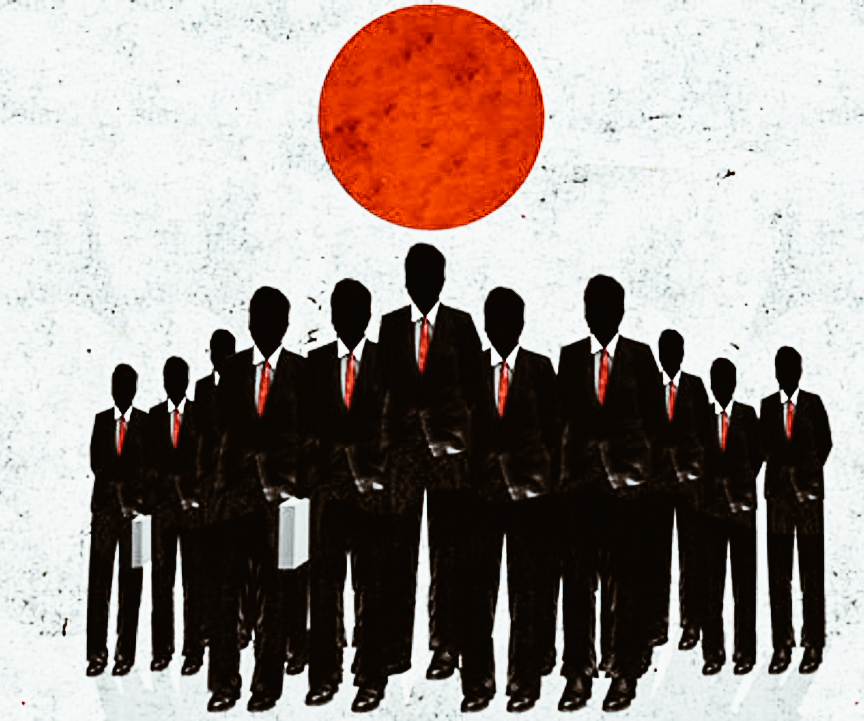
photo credits: economist.com
Open your minds
And here comes my moment, OUR moment. Closed-mindedness does not help anyone, not even at work. It closes not only our mind but also avenues and possibilities. We often don't approach someone else out of fear and lack of knowledge. Prejudices, stereotypes, all this closes us in the desert island and does not make us look beyond.
Looking beyond
We decided to work with Japan, but not without a lot of study and effort. We have shaped our knowledge and skills in order to get closer to these people. We have studied and are still studying the language in order to get closer to them, we want to understand them more and more so that we can become a real Problem Solver for them, which can remain so over time, which can be a support in times of difficulty that should not be there because we know how to avoid them from the beginning.
The difference in language, culture, habits... we have said that all this is frightening. But we have to fall in love with this language, this culture, these customs, everything that has been said so far. If there is no way of shaping your own mind and falling in love with all these things yourself, I would say there is no point in trying. If you realise that you are in love with it, then start working and begin to understand what the Japanese in question needs. Very often we have come across what we never expected: incredible similarities. Japan and Italy look very much alike, but these things are only perceptible to the eye of someone who wants to be an expert, someone who wants to improve, someone who wants to approach. As I have said before, we have to fall in love first, then make others fall in love and, in this case, our client.
You cannot please everyone, but strive to please those who deserve it, those you want to walk alongside both professionally and privately. Most likely you will be not only their problem solver but also and above all yours.
The beauty of a website, of a social, of everything that is communication is important and it is the work of the backstage. But it is nothing without the work of the frontman, the same can be said of the backstage. A well-staffed team is one that has both back and front stage, never forget that and, at the end of the day, the psychology of building an audience is not that different from psychology in general. If it applied to everything we live, maybe things would be better for everyone.
Fall in love, but really fall in love. Oh well, there are always coconuts...
Ema tablets and the temples of Japan
The Japan Italy Bridge column continues to promote in-depth studies related to the world of Japan, today we talk about the Ema Tablets that we find in all the temples of Japan.
Raise your hand if you've never seen these curious wooden plates in an anime. Perhaps in a Shinto shrine, with a miko - the priestess dressed in red and white - going about her business. In any case, whether you've seen them before or not, today you can find out more.
Ema 絵馬 Japanese wooden votive tablets
Guest Author: Flavia
Translated as 'Horse Representation', Ema's are flat plaques designed to transcribe wishes and fears to be addressed to gods/spirits (kami) and buddhas. In other words, they represent a way for people to write a little message to the spiritual world. Formerly made of clay, they later began to be made of wood. Once a prayer has been written, the Ema is hung in a dedicated space at Shinto shrines as well as Buddhist temples. It is in fact a custom of Shinto origin that later spread to temples. Since they are all displayed together 'publicly', anyone can of course take a peek at them (it is important that the kami do the same).
However, it is also possible to keep them for oneself, as an heirloom. The great variety of representations, colours and styles that characterise them has always attracted the curiosity of folklorists. Together with the inscriptions on them, they represent a veritable prism through which a wide range of life stories are presented to us. A cross-section of spirituality that can show us the different colours of Japanese reality.
Ema are not the only religious objects designed to 'operate' in this sense, but they are perhaps the most widespread and can be found just about everywhere. The fact that they can be left in place distinguishes them from other religious objects such as Fuda (札) and O-Mamori (お守り). With an average width of 15 cm and a height of 9 cm, they can be very varied in size, shape and colour.
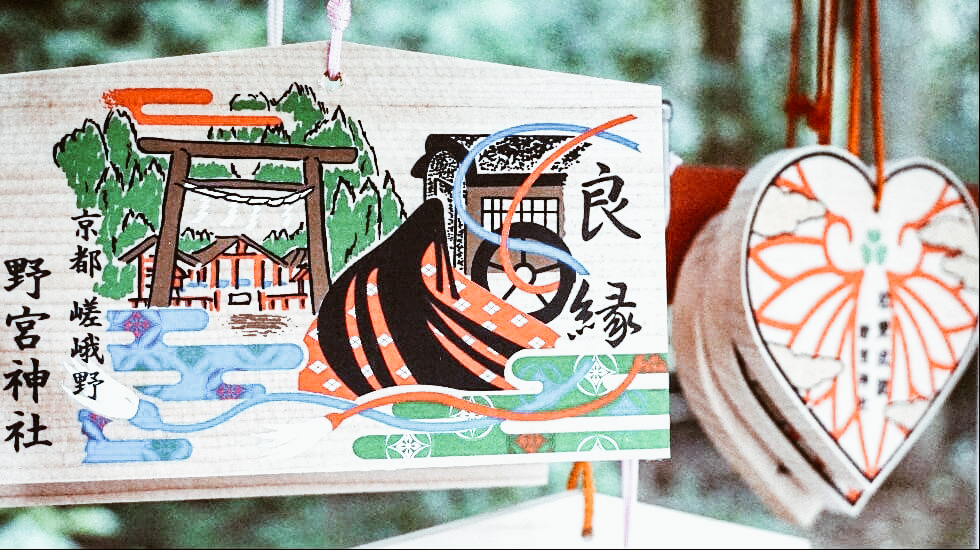
photo credits: sharing-kyoto.com/
The themes depicted can range from the following:
-
- the kami/buddha to whom the shrine or temple is dedicated (there may even be tablets depicting Thomas Edison!)
.
- the specific benefits that kami (spirits/goddesses) and buddhas are empowered to bestow;
- scenes on the origin and history of the place of worship;
- religious or cultural objects, such as zodiac animals of Chinese origin (some shrines are specifically dedicated to an animal-sign of the zodiac)
.
However, traditionally, particular importance is given to the representation of the horse, as suggested by the etymology of the name itself: e (絵) "image, drawing", but (馬) "horse".
Why the horse?
Short answer: because in ancient times people used to offer a horse to shrines and temples to obtain blessings and good luck. The figure of the 'sacred horse' still survives to this day, so much so that some religious centres use to keep one. And, if not in the flesh, in the form of a life-size model.
This sacredness of the horse originates from an ancient Shinto belief that saw the horse as an animal dear to the kami and as their messenger (although it is also important in Buddhism). One thing led to another, and so the horse quickly became a symbol carrying messages between the human world and the "other side". Or the Higan (彼岸) as it is also called in the anime/manga Noragami. (Noragami is highly recommended if you are attracted to the 'spiritual' genre, so to speak. Even through the author's fictional interpretation, it gives you a religious insight into Japan, and renders very well the relationship of the Japanese with spirituality).
Anyway, having established that our horse was considered special, the idea was to invoke a 'hand from heaven' in troublesome situations or events. For example, in times of drought they hoped for some rain (black horse) or, if not, for it to stop raining (white horse). However, in ancient times only a few people could afford to give a horse away easily. The majority of people tried to hold on to them as a valuable animal for their livelihood. Moreover, as the academic Ian Reader notes, such offerings could also prove costly for the temples if, at every prayer of some rich lord, they found themselves with a horse each time, which rightly had to be maintained, with the expense that this entailed.
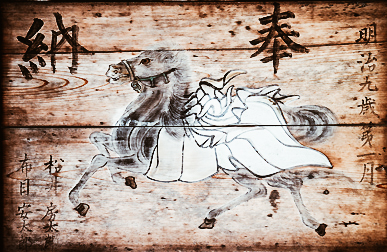
photo credits: japan-photo.de
It was in response to these contingent problems that the idea of depicting the horse began to emerge. Instead of using the animal in the flesh, why not make 'e-ma' ('horse-image') instead? An affordable solution, accessible to all.
Ema thus made their first appearance at the beginning of the 8th century (Nara period), while the first evidence comes to us from the mid-10th century (Heian period). The collection of Chinese poems and prose Honchō Bunsui or Monzui ( 本朝文粋 ) would be the very first work to mention the "ema". Many others would follow, one of which was the Konjaku monogatari (今昔物語).
E-ma: the origins of the tablets
.
Ema are said to have originated as a substitute for the horse in the act of conveying one's prayers to the supreme otherworldly entities. Although some voices have been heard to the contrary of this general line. Another reading of the events would in fact have it that the plates took on the definition "ema", simply because the horse design was more popular than other themes.
This is because the theme of the design changed depending on the request. Let's say that the design of an Ema was that of a horse: the requesting party's wish could concern the welfare of their horse (think of the case of the most humble, for whom such an animal was fundamental). If the wish did not concern a horse but, for example, a physical ailment, the design would depict the painful part of the body; and so on. So "ema" according to this view would not indicate that the tablets were given the same "agency" as the animal. Rather, it simply means that there were a lot of requests concerning horses, from which an extension of the designation would be triggered.
Another interpretation, however, emphasises that the sacredness of the horse is not a purely Shinto invention and that in Buddhism, too, the animal has its own significance. Thus, the origin of the Ema would perhaps be more to be found by looking back at the role of Buddhism, on which Japanese folk traditions draw extensively. In this regard, the scholar Gorai Shigeru saw a possible origin of the Ema in a particular folk custom, related to the Buddhist tradition O-Bon (お盆). This custom consists of carving horse forms from certain plants, again for votive purposes to the souls of the dead. Gorai seems to suggest that the origin of this custom may predate that attributed to the Ema or other similar forms of representation.
Both of these dissonant rumours about the origins of the Ema do not seem to be well supported by archaeology. In fact, the archaeological findings all seem to confirm the hypothesis of the need for an alternative means of transport to the horse, which at the same time 'took its place'. Something equivalent, embodying its spirit, its symbol: its image.
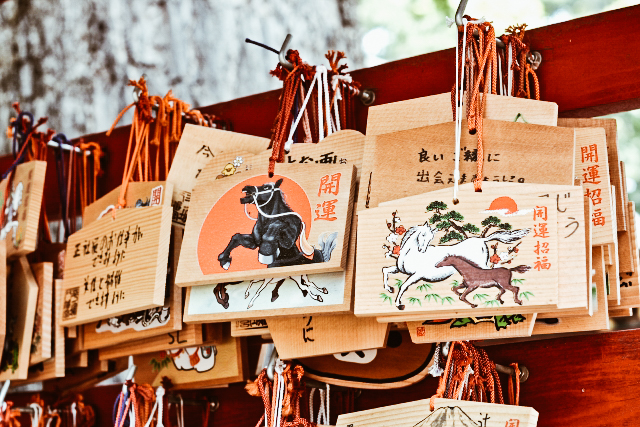
photo credits: shrine-temple-navi.jp
Ema as 'living objects'
.
The proof of this would come from the language itself. There are numerous ancient inscriptions on Ema that, from a linguistic point of view, unequivocally refer to the tablets as if they were talking about the horse itself. Let us look at some of them.
In the aforementioned Honchō Bunsui there is a reference to the Ema containing the symbol 匹 ("hiki", "biki" or "piki"). Reporting from the Reader, the expression would be: "色紙絵馬三匹 "or" 3 coloured sheets of horse pictures". Nowadays used as a counter for small animals, in Old Japanese the ideogram 匹 referred to stable animals, including horses. The combination of the word "ema" with this linguistic particle, whose function is to designate a living being, speaks volumes. Similar inscriptions have also been found in two shrines in Yamagata and Saitama, dating back to the 16th and 17th centuries. In this case, we find the ideogram 疋 instead of 匹, but the meaning and reading are the same. Again from Reader, it is: "shinme ippiki" (神馬一疋) and "ema ippiki" " 絵馬一疋 ". That is, "a sacred horse" and "an image of a horse".
However, although the hypothesis on the possible Buddhist origin of the tablets was not solid, Buddhism at least in retrospect is certainly present, given the Japanese syncretism. Among other things, in the temples, the Ema serve as a means of transmitting Buddhist religious doctrine, thus assuming a further function beyond that for which they were born. We are talking about those teachings about the importance of altruism or compassion (understood in Buddhism as 'empathy') or through images taken from stories about the Buddha. Although not entirely certain, it is estimated that the adoption of tablets by Buddhist temples began roughly between the 12th and 14th centuries (Kamakura period). Indeed, many of the Emaki - scroll artworks - of the period depict the Ema or horses themselves, both in Shinto shrines and Buddhist temples.
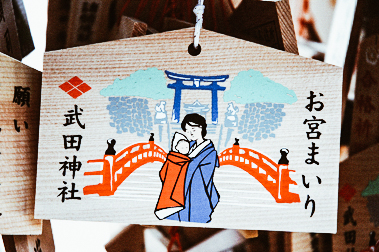

photo credits: japan-photo.de
Wooden tablets as an art form
.
Over the centuries, the designs of the Ema became more and more elaborate and varied, giving rise to a true folk art form. In particular, the Ō-ema (大絵馬), or "big ema", proved to be an important step in the development of Japanese art. In fact, after the birth of the Ō-ema, several great Japanese artists would draw on the ema style.
Created between the 14th and 16th centuries (Muromachi period), these Ema were at least one metre in height and width. They were donated to temples and shrines as a sign of gratitude - even after the fact, not only at the time of the request - and were placed in special spaces, the Ema-dō (絵馬堂). The oldest Ema-dō seems to have been sponsored by none other than... Toyotomi Hideyoshi in 1606, for the Kitano shrine in Kyoto. Also in Kyoto, the famous Kiyomizu-dera (清水寺) has several Ō-ema, originally donated by merchants as thanks for the safe return of their trading ships.
The consequence of this artistic development was the emergence of a "caste" of artists specialised in ema painting, which flourished in the Edo or Tokugawa period. This period - of economic expansion, especially at the beginning - led to an increase in the demand for professionals, enabling them to make a living from producing small ema paintings alone.

photo credits: japan-photo.de
The Ema language: symbolism
.
It was during this period that most of the symbols and themes reproduced on tablets originated. But to what does this need to put thoughts and feelings on paper - or rather, on wood - owe? This need is rooted in the folkloristic belief that a desire has a better chance of manifesting itself in reality if it is expressed in words, because by doing so, it gives it form. We must also bear in mind that in ancient times literacy was reserved for a small segment of the population. An alternative language to words, immediately comprehensible to all, was, therefore, necessary: this is the encounter between folklore and symbolism. Symbolic language thus proved to be the most effective way of doing this, through the depiction of specific problems or the desired 'grace'.
The representations could range from the well-being of children to health, fertility and even sexual desires. If, for example, a wish concerning childbirth, an Ema with a dog was the most appropriate choice. While the image of the white fox still indicates prosperity and abundance. For requests concerning health, the part of the body with the illness was also depicted. For those concerning fertility and sexuality, well: the depictions were unequivocal.

photo credits: himawari-japan.com
The type of representation can therefore be purely symbolic, drawn from tradition (see the example of the dog) or directly portray the physical object of interest (body parts). In any case, let us remember that such symbology, whether analogical or realistic, is accompanied by the thaumaturgical function of the various religious entities worshipped (spirits/gods/Buddhas). As we said at the beginning, 'protective deities' of a particular sphere of life (health, education and so on) are also a main iconic subject of the Ema. These are just examples, as subjects and styles can be as varied as people's requests and desires.
Ema language: forms and words
.
In the transition to the contemporary age, the traditional themes depicted have not changed much compared to ancient times. Of course there has been an addition of new subjects (see Thomas Edison or, why not, anime characters). However, we can observe an increase in the use of verbal language. We have already seen one reason for this: literacy. Literacy has thus added verbal language to symbolic language, allowing ordinary people to no longer depend solely on the former. So it is not uncommon nowadays to resort to linguistic games of homonymy and assonance to accompany the symbology of images.
Typical is the case of those Gokaku-ema (互角絵馬) - pentagonal tablets - with an 'educational' theme. They are designed for students, constantly seeking the support of the kami for success in their studies. Here, these Ema owe their shape to a pseudo-omonimy between the expression "gokaku" (互角) - pentagon - and "gōkaku" (合格) which indicates success in study. The subject of the Ema can therefore also be conveyed by the shape of the tablet itself! And, as you can see, it can sometimes make use of verbal meanings. A case of symbolism using verbal language is that of an Ema depicting an octopus, "tako" in Japanese (蛸) used to request help in eliminating corns. The term "callus" is spelled differently (胼胝) but is also pronounced "tako".
We can therefore see - to the delight of linguists and glottologists - that the ema language is made up of all these dimensions of communication. Symbols, shapes and words are thus integrated and intertwined in a single space. We should also remember that the graphic characters of the Japanese language derive from their ancestor pictograms, which directly represented visual objects!

photo credits: blog.livedoor.jp
Verbal language is very helpful in interpreting the meaning of a tablet's message. Because understanding the true meaning of symbolic language, needless to say, may not always be possible. Obviously, the use of verbal language does not guarantee 100% understanding, it depends on each case: there may be quite clear inscriptions, others more cryptic. The scholar Jennifer Robertson, who dealt with the Ema at the time of the Second World War, found a particular ambiguity in the tablets of this era. For this reason, she stresses the need to always take into account different possible interpretations.
Kogaeshi and Mabiki Ema, a special case
.
There is, however, a special type of Ema, where the message is neither a concern nor a need for something that is desired. A request, yes, but different from the others: a request for forgiveness. We are talking about all those plates that concern the delicate case of children, foetuses, aborted or stillborn: the so-called mizuko (水子). Ema concerning mizuko are called Kogaeshi (子がえし - lit. "sending back the baby"). Or even Mabiki (間引き - let's call it "reduction") which can refer to general infanticide.
In Buddhist temples specialising in mizuko (to which memorials are also dedicated), Kogaeshi Ema are hung in a special space, just for them, next to the statue of Jizō. In Buddhism, Jizō is a protective figure of the souls of children who died before their parents. According to belief, their spirits cannot cross the Sanzu - the river that separates earthly life from the "Other Side" - because they have not accumulated enough good deeds, due to premature death. They would therefore be condemned to pile up stones on the bank of the mystical river, but Jizō would protect them from demons and allow them to listen to mantras.
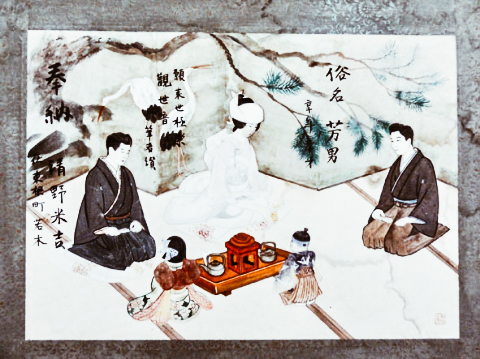
photo credits: hotoke-antiques.com
They differ from normal Ema, because their inscriptions are addressed to the spirit of the child, rather than to kami or buddha. Of course, they express all the anguish, sadness, regret of the mother or sometimes even both parents. The most common inscription, according to Reader, is a simple 'Gomen ne' (ごめんね) or 'I am sorry' ['Forgive me'] together with the reason for the gesture. This phenomenon was particularly striking at the turn of the late Edo and early Meiji periods, when extreme poverty and famine hit the Japanese population hard. The use of Mabiki Ema, however, has continued until contemporary times.
Mukasari Ema, another particular case
.
Another case of a death-related plaque is that of the Mukasari-ema (ムカサリ絵馬). In fact, these tablets were created for a singular purpose: to complete the CDs. Shirei Kekkon (死霊結婚), the marriages between dead souls. They belong to the category of large ema and, according to Robertson, their diffusion seems to be limited to Okinawa and the north-east of Japan, in the Yamagata Prefecture. "Mukasari' would in fact mean 'marriage' in the Yamagata dialect (not coincidentally written in the katakana alphabet). In essence, these Mukasari-ema allow to "simulate" in the representation of the plate, the marriage of a person who died single or unmarried. It is a way of allowing the soul to find peace, preventing it from becoming a tormented spirit.
For if that were to happen, the spirit might remain anchored in the earthly world, through grief, for not having been able to experience the joy of starting a family. Thus, haunting the world of the living. It is thus also a way for the family of the deceased person, however fictitious, to realise that dream. In modern times, one can also resort to photographs, if any, of the person in wedding attire while still alive. Such Mukasari-ema were particularly used at the time of the Second World War, for the reason easily imaginable.
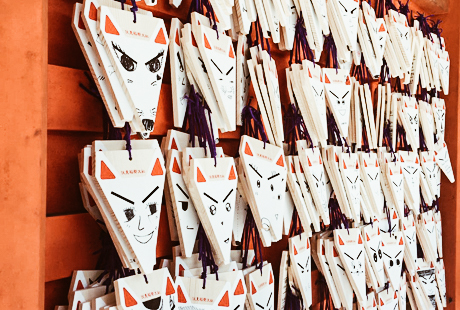
photo credits: journals.openedition.org
These are two borderline cases, the exception to the rule. Because, as is now clear, the Ema are made with an eye to human wellbeing, in the here and now, be it individual or extended to the whole of humanity. But they are still part of the Ema world and, if there is something that they have in common with the others, it is a significant function: the psychological function of releasing an inner burden. The very act of 'unloading' onto the tablets what one has inside - thoughts, desires, needs and concerns - is a profoundly cathartic act. Especially if those desires and needs run counter to the norms imposed by society. As Reader notes, a way for individuals to survive in situations beyond their normal control and the only way to survive, from social control.
People's desires
.
But in general, what specifically do people who have recourse to EMA want? We could identify two macro-areas: protection and success.
Health is certainly one of them, and it is a major theme at all times. As mentioned in the introduction, kami and buddha are associated with healing powers, attributed by extension also to shrines and temples dedicated to them. Requests for 'mercy' from illnesses and diseases - or for preventive protection from any danger - may concern the applicant himself, his family members, or other persons. Requests for success, which is a very popular area, may also concern the applicant or third parties, or a 'collective self' of which the applicant is a part. This is the case of all those requests made to propitiate the success of one's own company or institution of any other nature. There are Ema's for example where the requester is concerned with the success of their favourite team (baseball is very popular in Japan).
But there is one realm that stands out above them all: education. The contemporary Japanese education system is very rigid and competitive, and the pressure of failure on children can be particularly taxing, psychologically speaking. So, you want for that reason alone. Or even for inspiration - seeing friends or groups of peers go to religious centres to write their plaques - the fact remains that students represent a good chunk of the Ema's "clientele". In addition to asking for 'heaven's favour' in the success of tests and examinations, Ema registration can represent a moment of light-heartedness for the very young.
How could we not mention at this point the kami shinto Tenjin (天神), patron of culture and education, certainly popular among Japanese students. (Incidentally, Tenjin is the deification of a person who really existed between the 9th and 10th centuries AD! A Heian court scholar and politician, in life his real name was actually Sugawara no Michizane). His shrines are busiest in the cold months, especially January and early February, when the infamous "entrance exam hell" takes place.
There is no shortage of requests concerning material well-being as well as those concerning affairs of the heart. Even those to "sever ties" with the help of the special Enkiri-ema (縁切り) to express the desire to break the cord that binds to people, things (vices, addictions) or situations (diseases).
The incineration of the tablets
Yes, this is an important stage in the life of the tablets: the final one. Both Shinto shrines and Buddhist temples periodically burn the tablets offered for a dual purpose: ritual but also practical. (In Japanese religiosity, the practical and spiritual dimensions manage to marry serenely). The pragmatic motivation is simply... the need to make space! After all, hundreds and hundreds of tablets accumulate over time.
Spiritual motivation, on the other hand, is that through the ritual of the bonfire, people's wishes and requests can reach the realm of the kami and the buddha. Kami and Buddha who, I remind you, should have already read the Ema, always available in temples/sanctuaries, before the fire rituals. Once again Noragami comes to our aid, with its story so illustrative. It is not unusual to see the Tenjin himself wandering around in the sanctuaries dedicated to him, next to the Ema tablets. Noragami also touches on the theme of severing ties, which we spoke about earlier (in short, you get the hint: watch/read it).

photo credits: https://youtu.be/Vn6AoThrXyc
When does this ritual take place?
The changeover to the new year is the moment that brings everyone together. However, it can also take place at other times, depending on each religious centre. Tenjin shrines, for example, usually do it at the end of October, just after the festivals dedicated to him.
The period around New Year's Eve, O-Shogatsu (お正月), is however ideal for everyone, being a time of transition. What better time to symbolically release what has now had its day, releasing the wishes and demands of the old year? And at the same time, what more propitious time to usher in the new year, perhaps by writing new ones? Boy, so many commissions for these kamis and buddhas from the very first sighs of the new year! The phrase "Getting rid of the old to make room for the new", in this context, can only fit well, lending itself more than perfectly to this dual interpretation.
Nothing rains from the sky!
.
But be careful not to misunderstand. Don't think that this is merely an act of superstition: nothing could be further from the truth! Resorting to the Ema is not the same as thinking of folding one's arms and waiting for an otherworldly grace. Those who resort to the EMA generally know, even with a hypothetical "favour from heaven", that 95% of the chances of success are given by their own commitment. And one's own mental attitude. I refer, of course, to all situations where one has power of action. In cases where this is not possible, the only thing to do is to try to act, as much as you can, on your mental attitude.
Ema tablets testify to the search for change or safety from some risk or danger. They have the power to approach even the most "secular", those who perhaps do not lead a great spiritual life. This may be the case for many young people, or for children, who may see in the tablets a playful side, as well as a support for their studies. The meaning of offering an Ema tablet is basically to cope with a crisis, of whatever nature, by resorting to the supernatural dimension, which has always been a source of support. In other words, the Ema performs a function of comfort and support. And, by extension, an important therapeutic function.
TENOHA &|RAMEN: The Ramen Club
TENOHA &|RAMEN is completely new and becomes TENOHA RAMEN CLUB! Are you ready for a unique experience?
TENOHA &| RAMEN reopens with the new "Ramen Club"
Author: SaiKaiAngel
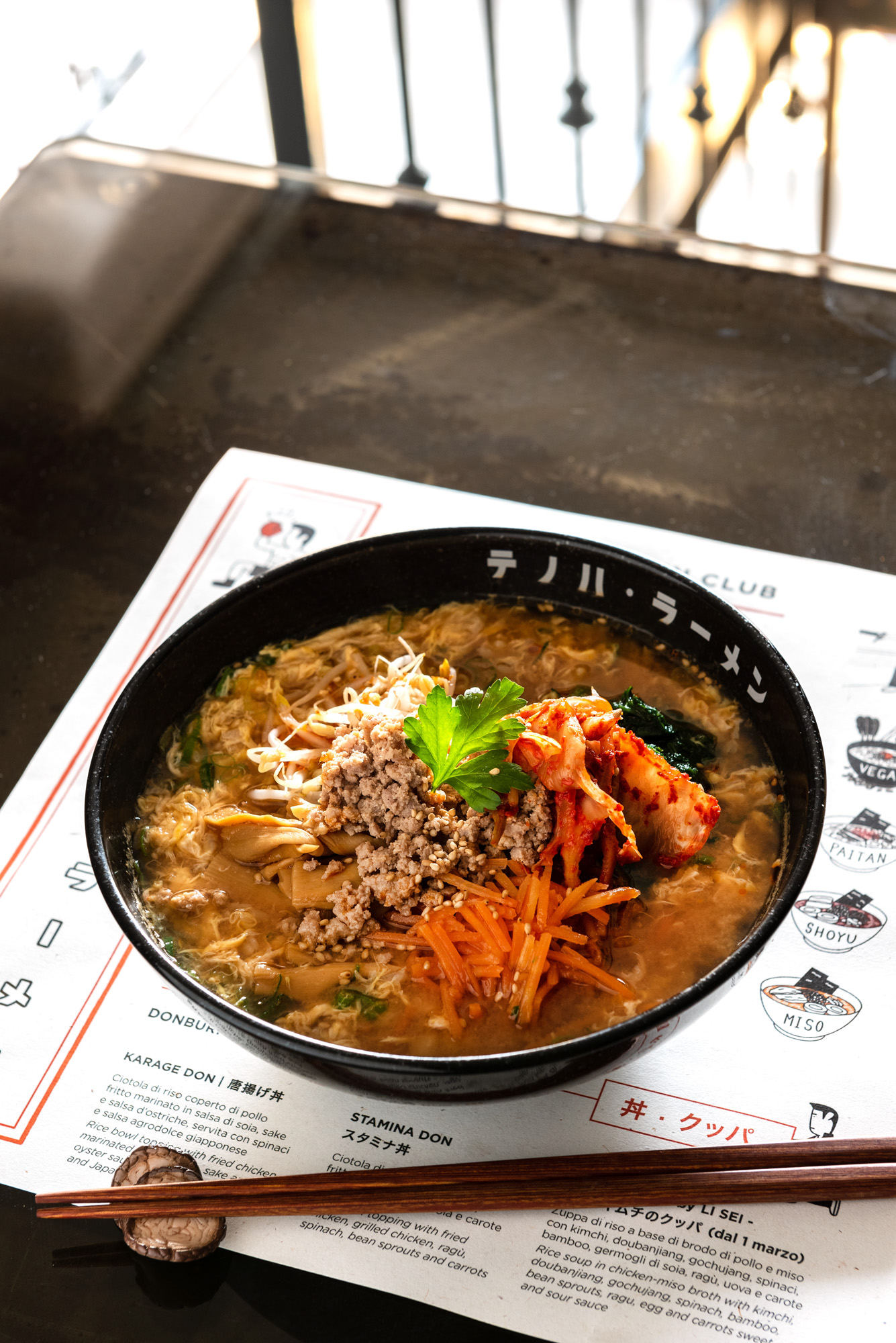
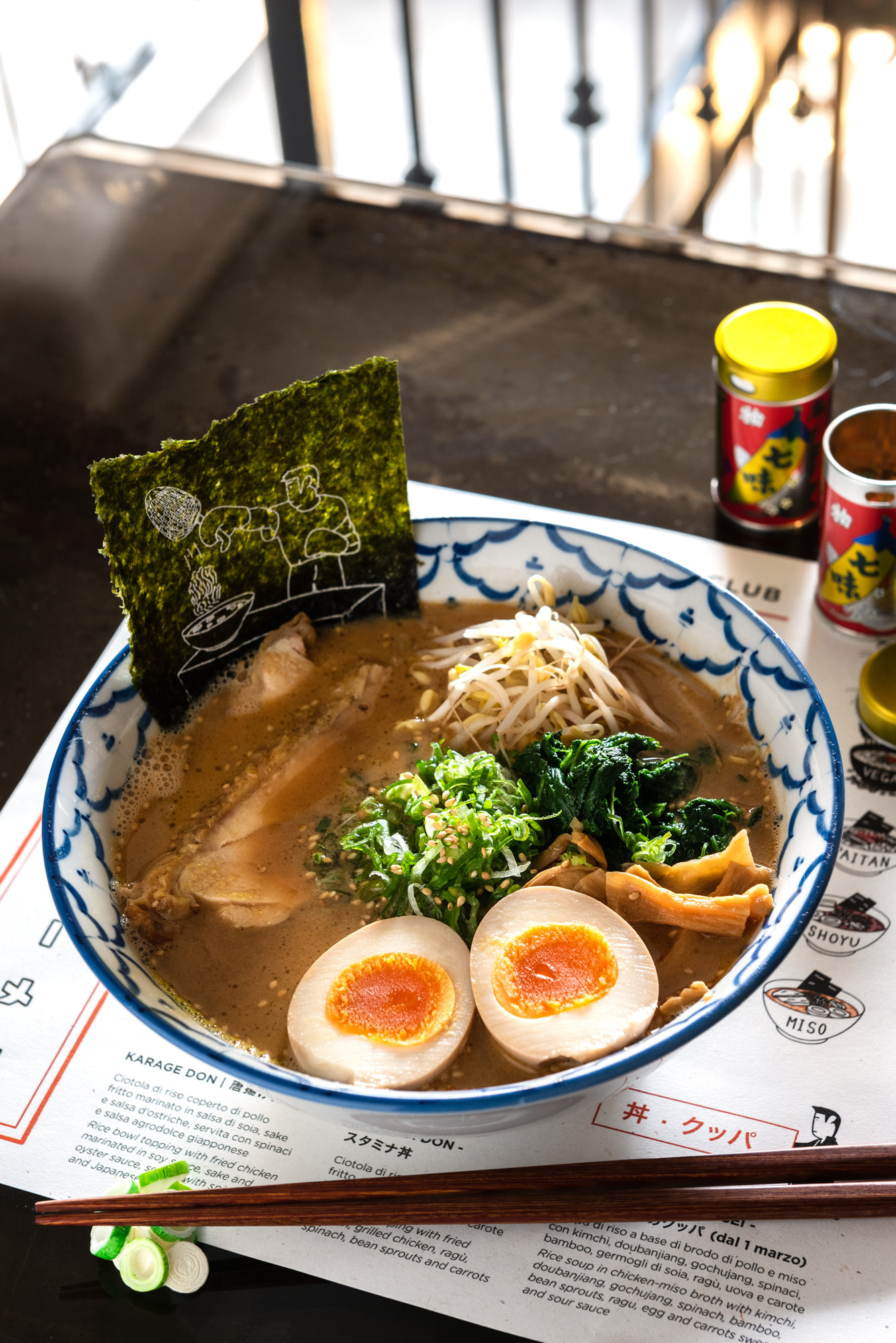
"Turning the Ramen experience into a guilt-free pleasure" These are the words of the extraordinary chef Takao, the one who has been delighting us with the best ramen in Italy for years. Takao is not only an incredible chef but also a former professional boxer! You didn't know that, did you? Chef Takao has always been very strict about nutrients, but he has always had a soft spot for ramen. As a calorie-dense dish, ramen was considered an "enemy" to his boxing career, but would such a warrior have given up? Of course not!
That's why the new TENOHA RAMEN CLUB was set up so that you can enjoy this dish without any sense of guilt!
As soon as he left boxing, Takao became a ramen chef, perfecting himself to such an extent that he became the one who is able to offer the unique and unrepeatable experience of authentic ramen here in Italy, creating numerous recipes to experience ramen truly guilt-free.
TENOHA RAMEN CLUB, the delicious work of chef Takao, is a place where you can not only satisfy your palate with the authenticity of Japanese ramen, but you can do it without any sense of guilt, with the knowledge that each dish is perfect for the sportsman or for those who want to eat in a completely healthy way. We are in front of an absolute novelty here in Italy, you will realise it just by entering the TENOHA RAMEN CLUB, completely reborn to tell a story, one of those very important stories that will leave you fascinated. You will look around and be immersed in the world of chef Takao, in his history, in his continuous study to always offer the best to anyone who wants healthy and tasty nourishment. Work, effort, experience, health, determination and safety - all this is TENOHA RAMEN CLUB!
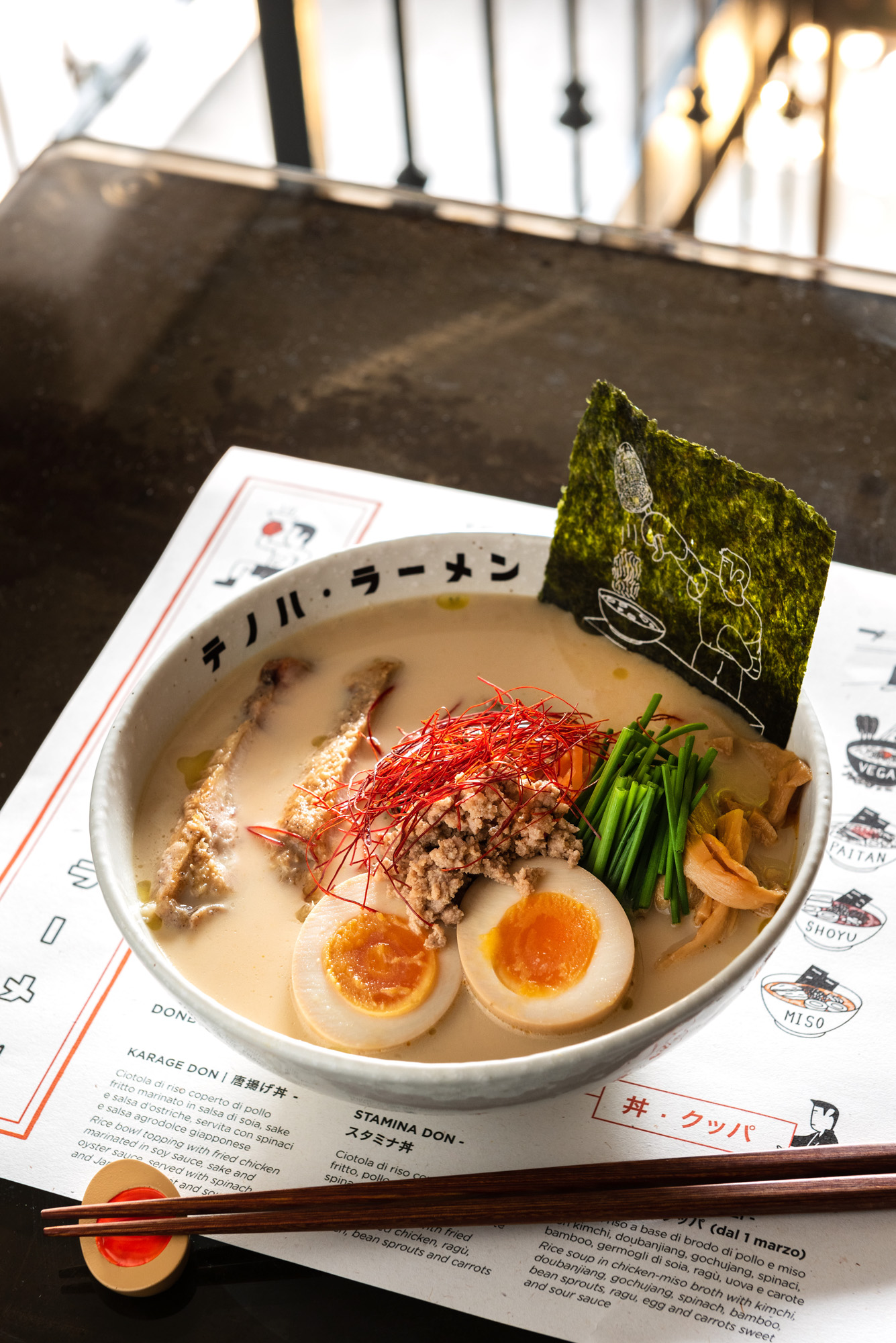
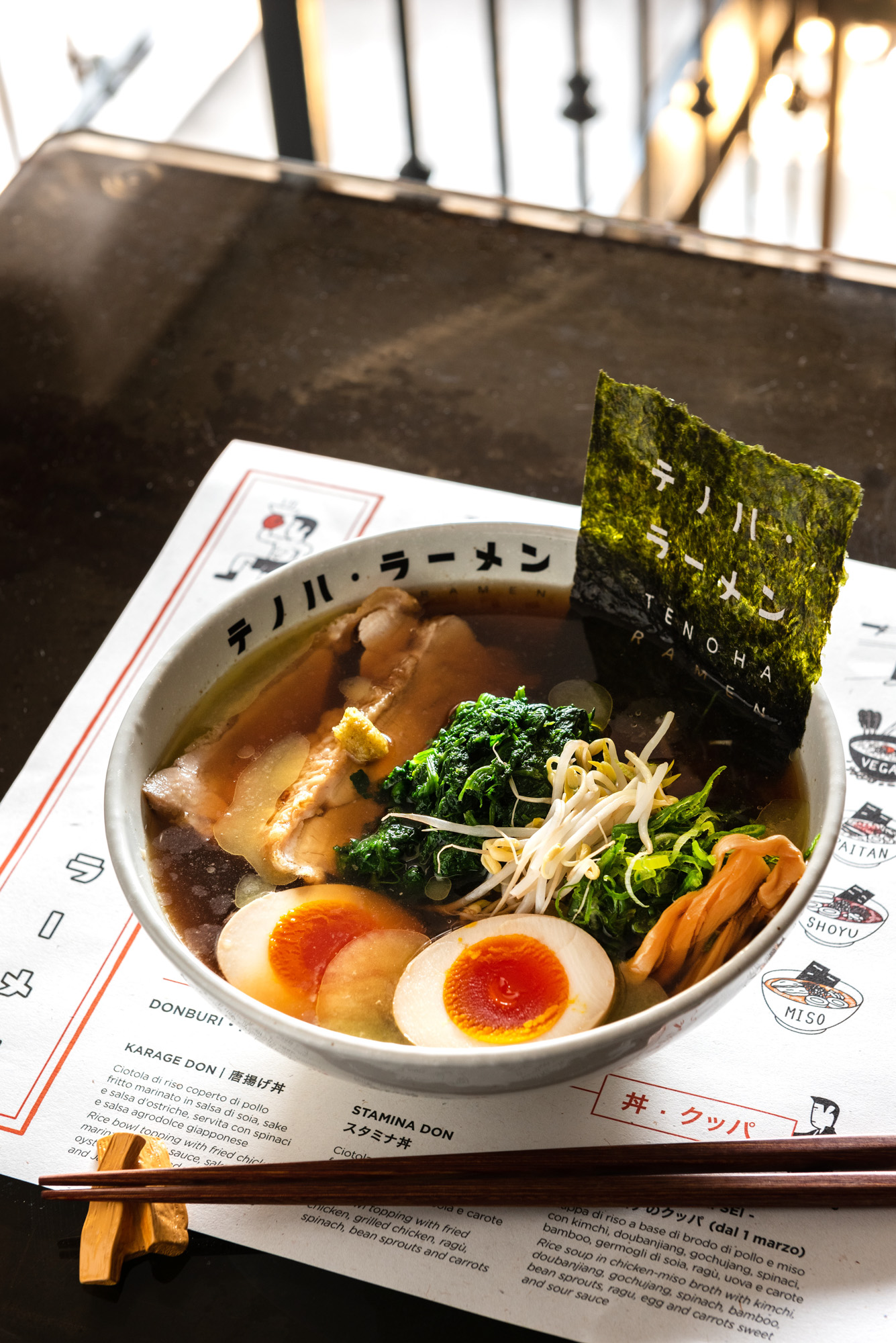
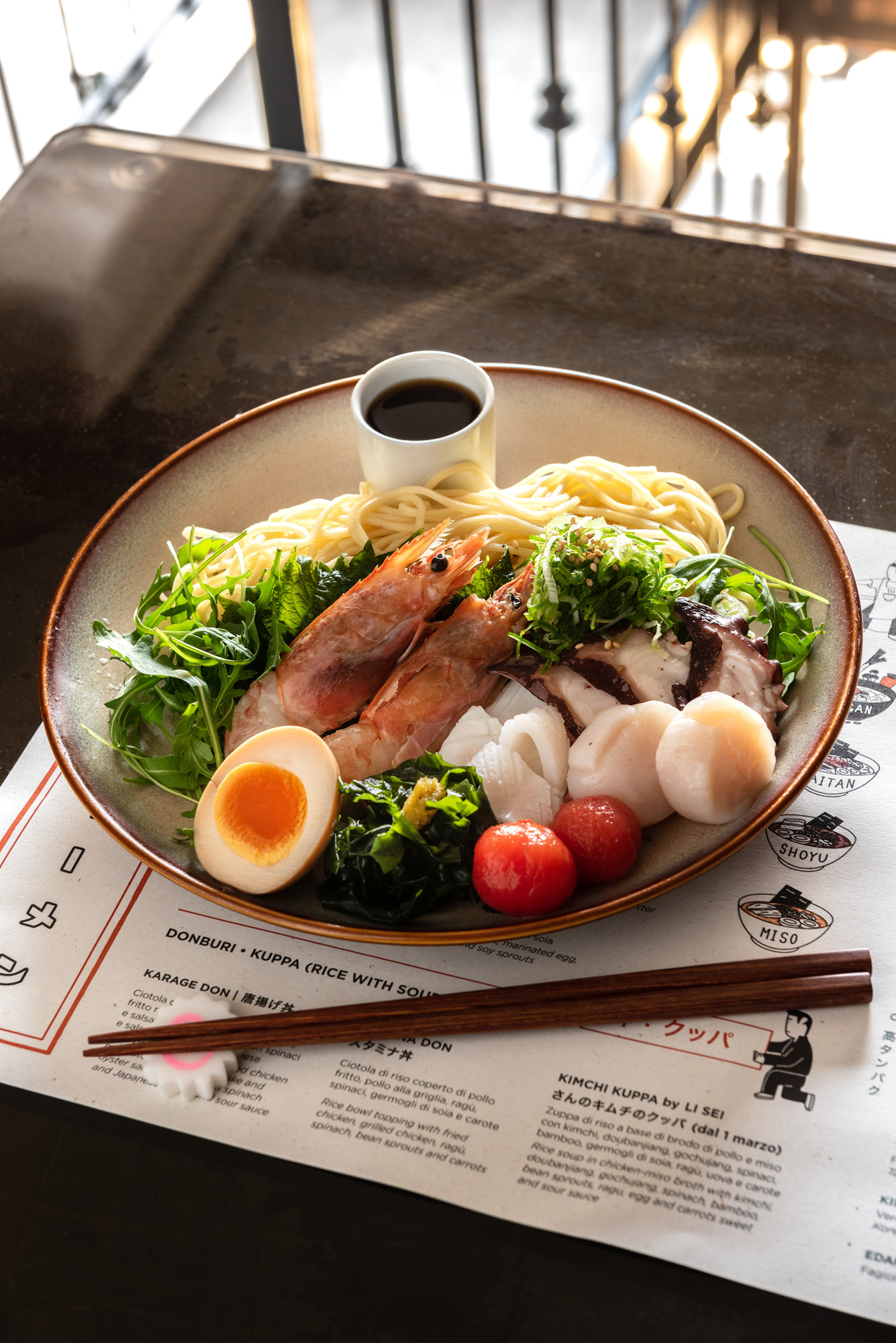
You will feel part of that important history, pampered and confident that you are in the hands of a chef whose mind is always on preparing healthy and nutritious ramen, 365 days, 24 hours a day.
Live and let your friends and loved ones experience this new freedom to eat the true tradition of Japanese ramen without any sense of guilt!
From 12 February, TENOHA RAMEN CLUB has a new face and is ready to amaze you again, always in the expert hands of a great chef and a great ex-boxer! Get to know Takao and his story!
TENOHA RAMEN CLUB - Via Vigevano 20, 20144 Milano
photo credit: Anna Daverio







